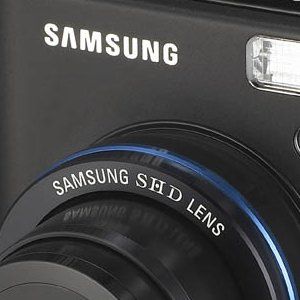Samsung has updated its S850 model with the S1050 and the camera comes complete with a rather tempting feature set. This includes a suite of manual controls for the more advanced among you, a 10-megapixel sensor, 5x optical zoom lens, and a new large 3-inch screen.
Our quick take
Some sluggish performance aspects, odd handling, and menu foibles tarnish an otherwise excellent image quality performance at low ISOs. Noise is an issue too at higher ISOs though.

Samsung S1050 digital camera - 3.5 / 5
| FOR | AGAINST |
|---|---|
|
|
Face detection AF is in there too along with a set of nice image tweaks for colour keys (green, red, blue and the like), black and white or negative snapping modes among those on offer. Samsung’s Advanced Shake Reduction or ASR is included but this basically just gives the ISO a speed bump, so potentially opening it up to the problems associated with image noise, which we’ll look at shortly.
In terms of handling, the camera feels nice in the hand thanks to its sturdy beuild and nicely sculpted handgrip design. The top plate hosts the shutter button, recessing on/off switch and a mode dial for switching the camera through its various shooting modes. These include manual modes such as aperture and shutter priority, full manual control, 11-scene modes and a fully auto position.
So far so ho hum. Unfortunately, the dial is very easily knocked when in use, particularly if switching from horizontal to vertical compositions where you find the camera has changed mode or is between settings. The scene modes are buried within a menu (though the last used scene mode remains selected) which, like the rest of the shooting menus on the camera, is not as straight forward to use as I’d like.
I know that Samsung has paid particular attention to some of its camera’s menu system using touch screen technology (the NV series of camera for example) but here some of those lessons could have been utilised too. Menu operation is counterintuitive at best. For instance, to select a new ISO in, say, Program AE mode, you press the “+/-“ button on the back and scroll down to the ISO chart using the four-way controller and then you need to scroll across to the setting required when the new ISO menu springs out.
Not too bad. But in manual modes such as aperture priority, you need to press the same “+/-“ button once, this brings up the aperture selection mode, then press the same button again to bring up the shooting menu again then scroll to the ISO position, all seemingly convoluted and slow to use, which is a shame.
The control layout looks neat, but in reality, the buttons on the back are placed to close together so that pressing the “+/-“ sometimes means you hit the audio clip record button too, ditto the playback and Face AF button. Another mystery is the lack of an exposure compensation control (usually this would be got to via the “+/-“ button) but here you need to plough through menus once again, although as with the ISO example used above, once active, it’s the top menu if you nee to go back to it. But this makes the camera’s usefulness in fleeting situations seriously compromised in my view.
Performance is also quite slow, with focusing and lens zooming feeling treacle-like in use as does zooming an image in playback where the camera has to wait the image to load into the buffer before you can zoom in to review focus for example.
Unfortunately that’s something you have to do far too often on the S1050 since the camera has real problems with smaller subjects (even in macro) and in low light and even using the Face AF. However, metering is very good indeed and the addition of a manual focus mode (although oddly this is buried in under the macro control and so again, not very intuitive) makes amends for some of the camera's more sluggish moments.
In terms of image quality, low ISO settings of 80 and 100 and 200 are excellent; though I notice, the lens exhibits some odd distortion at the – otherwise excellent – close focus distance of 1cm available through the manual focus menu only. Above ISO 400 and disappointingly, noise starts to become an issue and ISO 1600 images are almost unusable since detail and colour are stripped out and noise fills the shots; particularly badly in shadows or low key parts of a scene.
But when the S1050 gets it right, boy, it does a great job. Detail is superb and some of the fine filigree of ice in my test shots at lower ISOs is simply stunning, it’s just a shame the other issues cloud the horizon so overwhelmingly.
To recap
Samsung’s update of the S850 looks very tempting package on paper but it has some serious issues when you come to use
